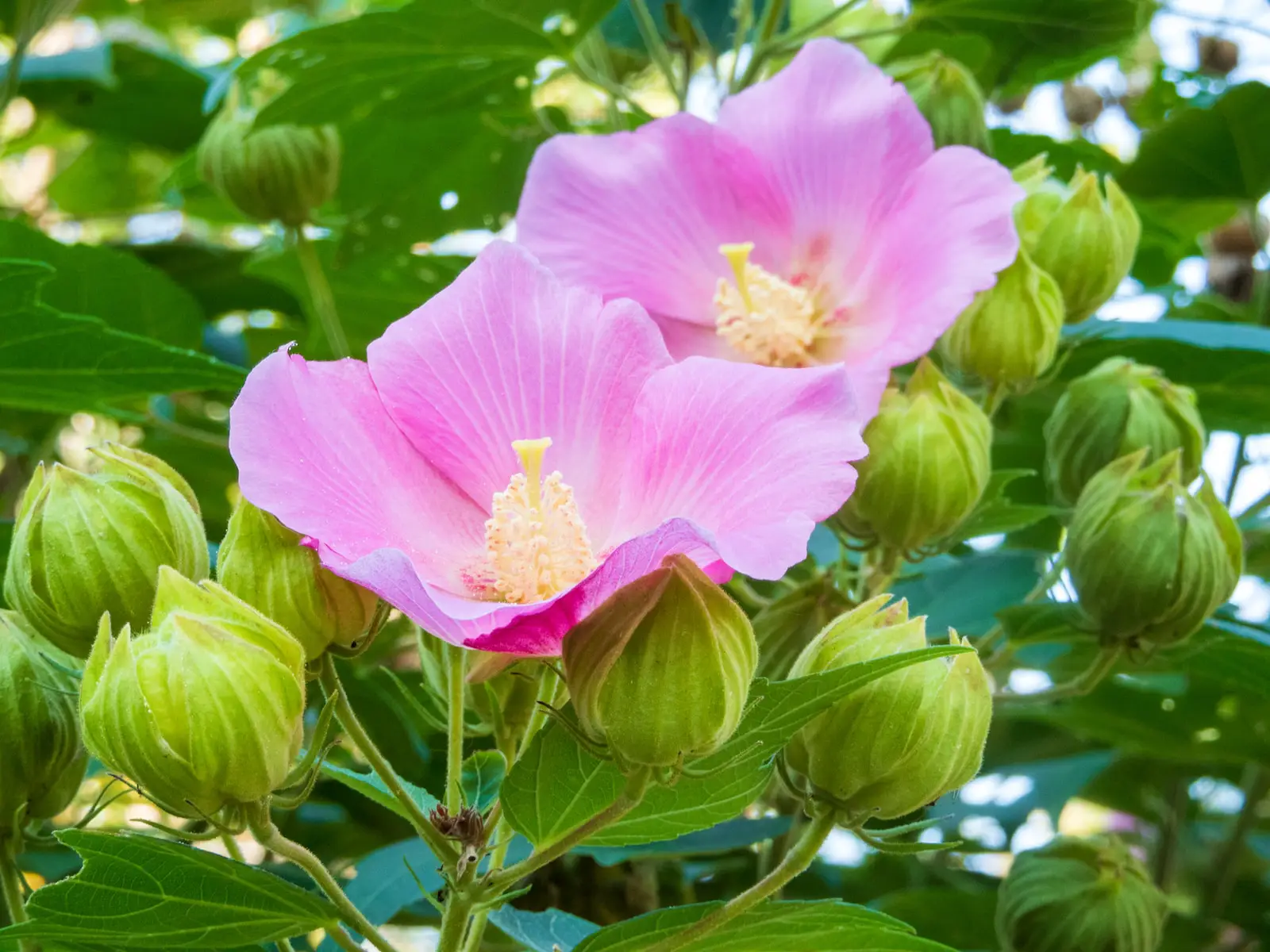The Confederate Rose, despite its common name, is neither a rose nor Confederate in origin. It is a deciduous shrub known for its large, showy flowers that change color as they age, usually shifting from white to pink and finally to deep red. Native to China, it was introduced to the southern United States, where it became widely cultivated and eventually associated with the South’s cultural heritage.
Hibiscus mutabilis, as it is botanically named, is a member of the hibiscus family and grows up to 15 feet in height. The broad, hand-shaped leaves provide an appealing backdrop to the blossoms, which can be up to 6 inches across. The plant’s unique ability to change the color of its flowers throughout the day is a fascinating feature that makes it stand out in gardens.
Easy to grow and tolerant of various conditions, Confederate Rose thrives in a wide range of soil types and climates. Its low-maintenance requirements, coupled with its unique, eye-catching appearance, contribute to its popularity among gardeners and plant enthusiasts alike.
| Attribute | Details |
|---|---|
| Common Names | Confederate Rose, Cotton Rose |
| Botanical Name | Hibiscus mutabilis |
| Family | Malvaceae |
| Plant Type | Deciduous shrub |
| Mature Size | 6-15 feet |
| Sun Exposure | Full sun |
| Soil Type | Well-drained, fertile soil |
| Hardiness Zones | 7-9 |
| Native Area | China |
Confederate Rose Care
The Confederate Rose is renowned for being an easy-to-care-for plant that grows well with minimal attention. Planting it in a location that receives adequate sunlight, and in well-drained soil, sets the stage for successful growth.
Regular watering during its first year helps it establish, while occasional pruning ensures it retains a desirable shape. Though it is not overly picky about soil, it responds well to soil enriched with organic matter. Gardeners may also appreciate its general resistance to pests and diseases.
Light Requirement for Confederate Rose
Full sun is ideal for the Confederate Rose, though it can tolerate partial shade. A location with at least 6 to 8 hours of sunlight per day promotes optimal growth and flowering.
Soil Requirements for Confederate Rose
Confederate Rose adapts to a wide range of soil types but thrives in well-drained, fertile soil. Adding compost or other organic matter improves soil structure and provides the nutrients the plant needs to flourish.
Water Requirements for Confederate Rose
This shrub prefers regular watering, especially during its first growing season to establish a deep root system. Once established, it has moderate drought tolerance but appreciates consistent moisture.
Temperature and Humidity
Confederate Rose is suitable for hardiness zones 7 to 9. While it can handle brief cold spells, it prefers warm temperatures. Humidity typically does not affect the plant adversely.
Fertilizer
An annual application of balanced, slow-release fertilizer encourages healthy growth and flowering. Additional feeding during the growing season can provide an extra boost if the soil is less fertile.
Pruning Confederate Rose
Pruning in late winter or early spring helps maintain the shape of the Confederate Rose and encourages new growth. Removing dead or weak branches improves the plant’s overall health and appearance.
Propagating Confederate Rose
The Confederate Rose can be propagated through stem cuttings or by division. Stem cuttings taken in late spring or early summer can be rooted in a sandy soil mix. Dividing mature plants during their dormant season is another effective method of propagation.
How To Grow Confederate Rose From Seed
Growing Confederate Rose from seed requires patience but can be rewarding. The seeds should be sown in a well-draining soil mix and kept moist. Cold stratification may enhance germination rates.
Common Pests & Plant Diseases
Aphids
Aphids can be controlled through regular inspection and the use of insecticidal soap.
No Significant Diseases
The Confederate Rose generally shows resistance to major diseases.
Common Problems With Confederate Rose
Leggy Growth
Leggy growth due to inadequate sunlight can be corrected by relocating the plant to a sunnier spot or improving pruning practices.
Slow Growth or Poor Flowering
Poor soil fertility or inadequate water might lead to slow growth or poor flowering. Adjusting watering practices and adding balanced fertilizer can resolve this issue.
Pro Tips
- Utilize Confederate Rose as a focal point in gardens due to its stunning flower display.
- Consider planting near patios or walkways where the color-changing flowers can be enjoyed up close.
- Mix with other flowering shrubs or perennials to create dynamic and colorful garden beds.
- Prune regularly to maintain desired shape, especially if space is limited.
- Plant in a container for patio or balcony gardening, making sure to provide enough space for growth.



